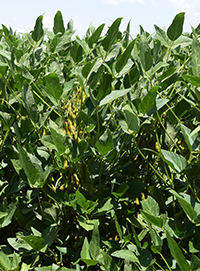 With tight supplies and rising input costs, growers should start thinking now about what type of weed management they're going to implement for the 2022 season, advises Bryan Young, professor of weed science at Purdue University.
With tight supplies and rising input costs, growers should start thinking now about what type of weed management they're going to implement for the 2022 season, advises Bryan Young, professor of weed science at Purdue University.
“Is it going to be tillage? Is it going to be herbicides? Is it going to be some other novel form that they haven't tried before such as cover crops?” Start planning it out right now, Young urges.
Focus not only on your field edges but beyond to your neighbors’ fields and your locale, adds Jason Gibson, Corteva Agriscience market development specialist based in Nebraska. Are you hearing about new weeds spreading and new types of herbicide resistance that might be on your doorstep that you haven't experienced yet, but could show up next year?
Identify, Map Where You Need Adjustments
“Use harvest time as an opportunity to map disease, insect, weed issues, field to field so you can see how over time, things are changing,” Gibson says. “From year to year, are you getting better or are you seeing more issues? That helps you identify more quickly whether you need to make a change.”
Gibson explains that when you have moisture in August and September, that increases the likelihood of having weeds present this fall, typically in October.
He offers these tips:
- Start clean in the spring with fall burndown treatments.
- Use pre-emergent herbicides with multiple effective sites of action at planting.
- Make postemergent treatments within 30 days of at-plant herbicide application; include a residual component.
- If you've got the ability, irrigate week to week to keep herbicides activated.
Build Your Management Plan
“Certainly, through the combine windshield is the best way to evaluate the obvious failures in weed control — those weeds producing seeds,” Purdue's Young says. “But also, if you had a plan and you had to re-spray for two postemergence applications where you didn't plan on it, what happened that you needed two applications?"
He observes that even if you controlled those weeds by the end of the season, and they're not present at harvest, “how can you prevent having those two post applications next year? And of course, our resounding answer for at least 10 years would be overlapping residual herbicides in corn and beans,” Young says.
If it’s a foliar-applied herbicide, apply it at the right time, the right weed growth stage, he recommends. To stretch that glyphosate dose, cut back on your ounces by attacking weeds of reasonable size “before they become the foot-tall to two-foot-tall monsters.”
Gear Up for 2022 Challenges
The costs of herbicides and other inputs are a consideration every season, so growers must ensure they use them wisely, Young advises. He notes herbicide options you had in 2021 might not be the best option for 2022.
“Even though you had something that worked, you might need to change. One good example of that is glyphosate. There's limited supply. I've heard costs in some cases have gone up four times from just a couple of years ago. So, if some herbicide costs have gone up that much, and there's limited supply, is there a better option than what you've used in the past?” Young asks.
Start talking with suppliers to see what's available, and at what price points, he says, because what made economic sense in 2021 might not make the most sense in 2022.
“They're talking shortages of glyphosate, shortages of glufosinate , maybe shortages of clethodim,” he notes.
Young says growers using the Enlist® system who want a combination of 2,4-D choline and glyphosate could look at Enlist Duo® herbicide, which has both, since it might be tough to find enough glyphosate solo product for tank mixes.
“If you don't want to spend more for glyphosate next year or it’s not available to you, it comes down to understanding all the herbicides not called glyphosate and what they bring to the table for weed control,” Young says. “And that's looking at university weed efficacy charts and listening to your crop consultants and specialists and industry recommendations about what herbicides can be used that aren't called glyphosate.”
This is where talking with your dealer can really help, adds Gibson.
This content produced by Farm Progress for Corteva Agriscience.
Enlist One® and Enlist Duo® herbicides are not registered for sale or use in all states or counties. Contact your state pesticide regulatory agency to determine if a product is registered for sale or use in your area. Enlist One and Enlist Duo herbicides are the only 2,4-D products authorized for use in Enlist crops. Always read and follow label directions.
The More You Grow
Find expert insights on agronomics, crop protection, farm operations and more.